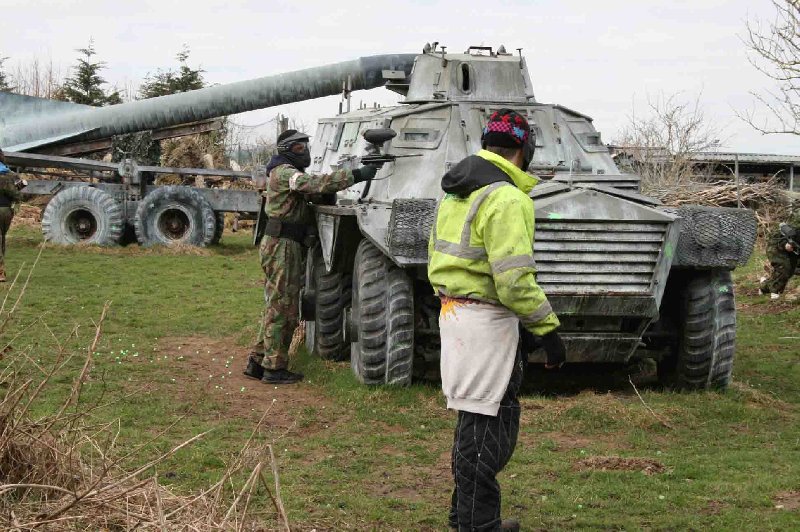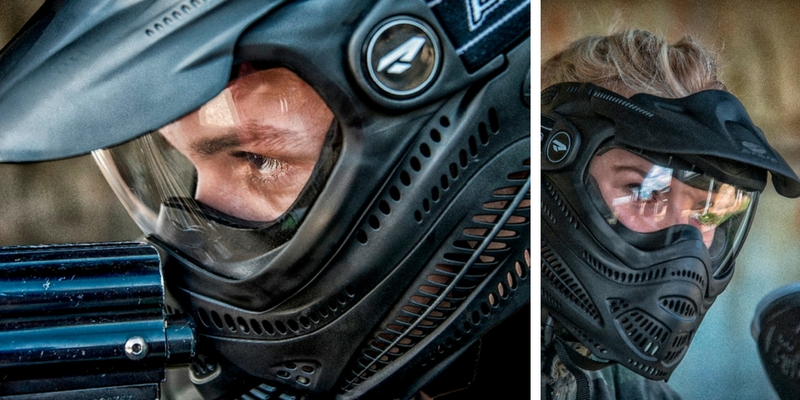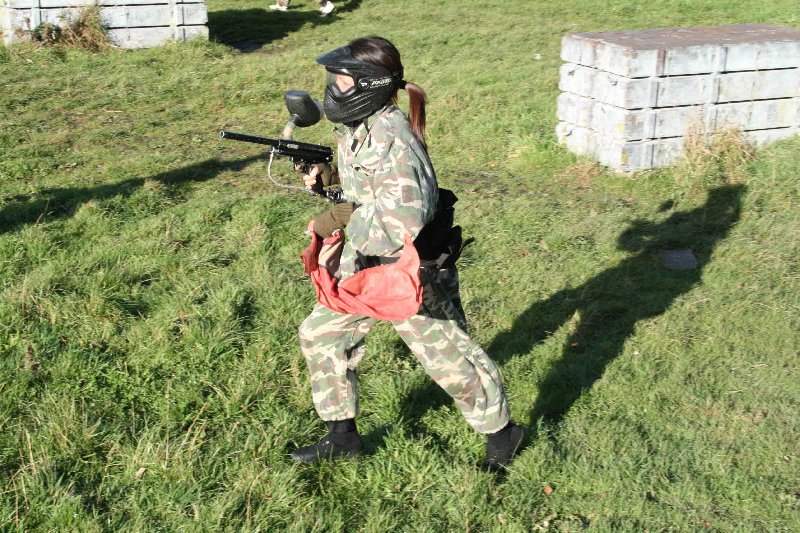

Shooting plastic pellets at speeds of up to 200mph while traversing all sorts of obstacles and muddy terrain doesn’t sound like the safest of pursuits - so how safe is paintball?
There’s no denying those paintballs can sting, and may even leave a bruise if they hit any exposed skin, but in reality, you’re no more likely to pick up an injury paintballing as you are playing football, rugby or any other sport that can result in scrapes and bruises.

It might surprise you to learn that, despite all those high-velocity paintballs flying about, twisted ankles are the most common type of paintball injury.
If you’re still a little apprehensive, though, here’s all you need to know about paintball safety to help put your mind at ease...
Unless you’re ready to take things up a level, you’ll not need any specialist paintball safety gear other than what you’re given before you enter the arena.
While knee pads, elbow pads, and chest protectors can all help protect against injury, a pair of goggles is the only essential piece of paintball safety equipment that must be worn at all times.

The reason goggles must be worn at all times is that a direct hit in the eye from a paintball could easily blind you.
And because not just any old goggles will do, all Mayhem eye protection is custom-made and double-glazed as standard to prevent fogging and reduce the need or temptation to remove them in-play. Our goggles also protect the temples and ears.
If, for any reason you do need to check your goggles while the game is going on, or you just need a time-out, each of our playing areas has its own safe arena where you can give your goggles a wipe-down or take a breather – as comfortable as our eyewear is, it's always good to be able to take them off in between games in complete safety.
Yes, there is a governing body for paintball in the UK, to ensure best practice and safety in regulated sites:
In order to become a member of this governing body, sites must undergo a thorough paintball risk assessment to ensure they meet the required safety standards, have the right staff-to-player ratio and also have the correct first aid equipment to hand.
Mayhem Paintball is a member of the UKPSF, and so before the battle begins all players are given the following paintball safety briefing to outline the rules and risks:
The UKPSF’s Code of Practice also states that playing areas must be free of potential hazards, and any hazards must be marked out to players as part of the initial safety briefing.
Kids love running around in muddy fields more than most, but the nature of paintball means it’s not suitable for any children under the age of 12 or in school year seven (but we do have mini paintball for 8-11-year-olds!) – this is an industry-standard supported by the UKPSF and there are no exceptions.
If you’re worried that your kids could be put into battle with a gang of locked-and-loaded adults, you needn’t be concerned, as we try to only match players up with those of a similar age, so there’ll only be a couple of years’ difference at the very most.

If you’re concerned your kids could get hit by a projectile, it might be worth giving them an extra layer to wear as padding – although lower velocity guns might be used, these can still sting and there is no extra safety equipment for younger players.
For any players under 12-years-old or in year six or below, we recommend laser tag, which is played in exactly the same way as paintball and has the same rules, but without the projectiles.
No matter what the age of the player, or the game they’re playing, it’s worth remembering that most injuries that occur are scrapes, bruises or twists and there is always that risk when running through a playing area.
As long as players stick to the rules, there is no greater risk of sustaining an injury playing paintball as there is taking part in any contact sport.
Figures from a study in the United States in 2004 found that while there were 0.2 injuries per 100,000 paintball players during 2004, there were 3.8 injuries for every 100,000 American football tackles.
The study also found the paintball injury rate was low compared to that of more mainstream sports, such as ice hockey (3.7 per 100,000), soccer and baseball (both 2.8 per 100,000).
Figures from the Royal Society for the Prevention of Accidents (RoSPA) show that of the 923 people who were admitted to UK Accident and Emergency wards following a paintball accident in 2002, almost half (47%) of those were for knee, ankle or foot injuries.
So while there are risks involved in paintballing, the dangers of playing paintball and sustaining an injury are much less than in most other, more mainstream, sporting pursuits.
Any activity that involves running around, especially on uneven and sometimes slippery surfaces, is going to come with the risk of injury, and there is also an inherent danger in firing relatively high-velocity projectiles at other players.
At Mayhem Paintball we take safety very seriously, adhere to the Code of Conduct set out by paintball governing bodies – our ratio of one fully-trained safety marshal for every ten players is considerably higher than 90% of all other paintball sites.
All our equipment is made specifically for use on our site and exceeds safety standards, and the designated safe zones in each playing area is a feature unique to Mayhem - our site has maintained an impeccable safety record in the 30 years it’s been up and running.
So, if you’ve never taken to the battlefield before and you’re wondering: “Is paintball safe?” – the answer is yes, just stick to the rules, have fun, and you won’t go far wrong.